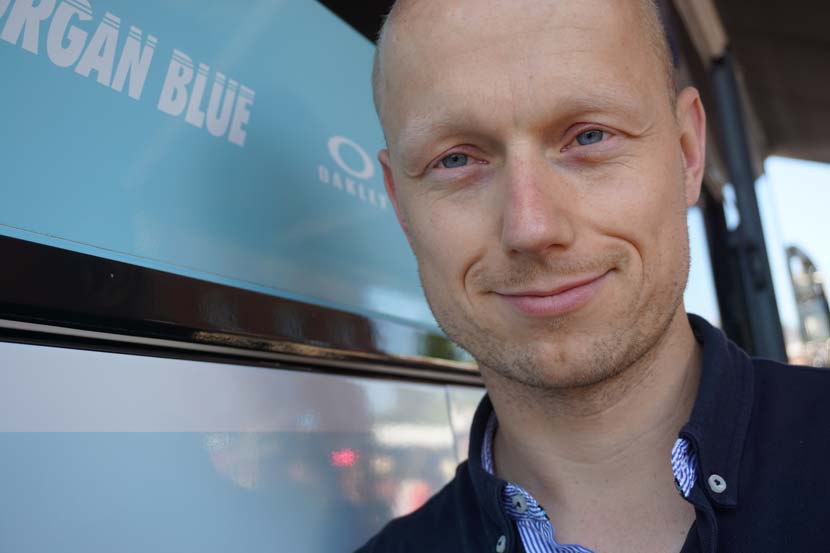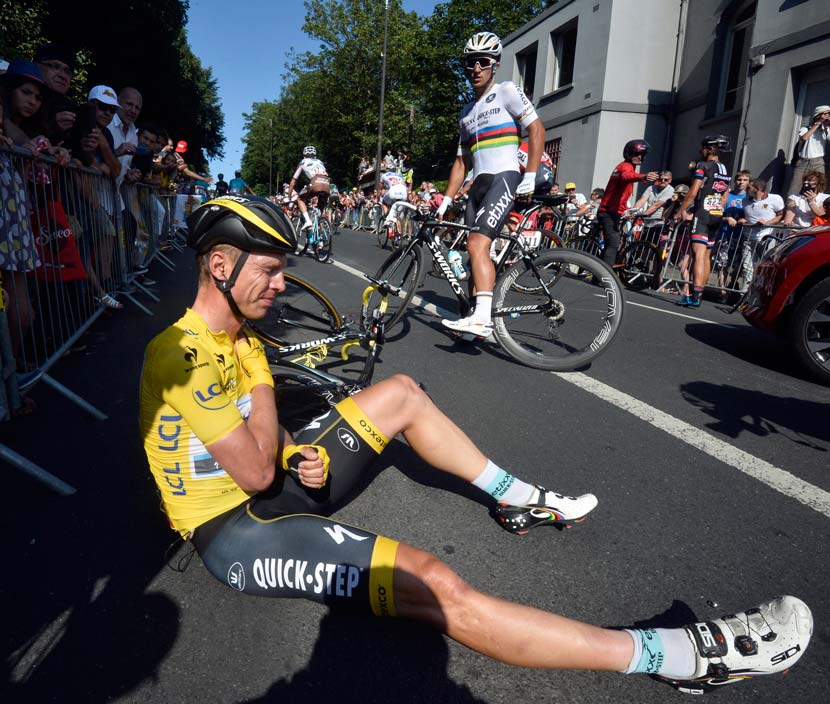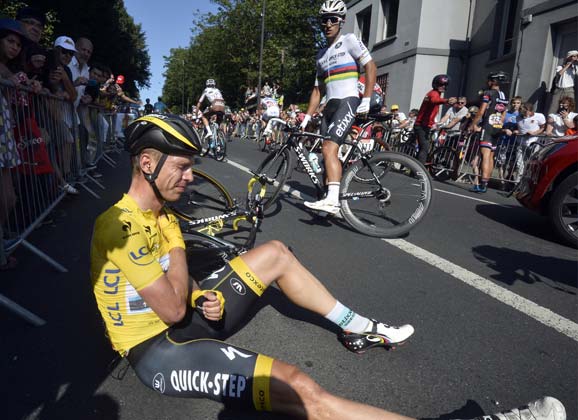Six stages into the 2015 Tour de France there have been four leaders of the general classification and two of them have crashed out while wearing the yellow jersey. As the peloton rides from Livarot to Fourgères on the first Friday of the 102nd Tour without any presence of the maillot jaune we consider why the original wishes of Tony Martin – to continue racing – could not become a reality.
The German winner of stage four crashed in the closing metres of stage six, broke his collarbone and he’s already been operated on. It was, as his team’s doctor Helge Riepenhof explained, a matter of urgency because of the risk of infection.
Initially, Martin’s reaction was to try and continue no matter the pain. Once doctor’s orders to abandon were given, however, he quickly changed his focus, asking when he could race his bike again.
RIDE spoke with Helge Riepenhof at the start of stage seven. Here is a transcript of that exchange…

The doctor for Etixx-Quickstep, Helge Riepenhof.
Photo: Rob Arnold
* * * * *
RIDE: I’m here with Helge Riepenhof who is the doctor for Etixx-Quickstep and he’s the man closest to Tony Martin, insofar as examinations [since the accident]. I wonder if you can just tell me the emotions that he had when he come to the bus originally just after the finish [of stage six]?
Helge Riepenhof: “He came to me straight after the finish line and he knew that something was going on in his shoulder and he knew that it wasn’t right.
“Tony had already suffered from a fracture in the Tour de France a couple of years ago so he knew what it means if he has a broken bone. So we looked at it just briefly in the truck behind the podium and it was quite clear what it was because it was an open fracture – one of the bones, a piece, came out. We could fix it as good as we could because he definitely wanted to go on the podium, he wanted to be there, and he wanted to show that he finished the stage.
“I think that shows his character and how important this Tour de France is for the rider.
“Anyway, afterwards we went straight to the ambulance truck and did the x-rays there and a few further examinations. From there we organised the transport directly to the hospital in Hamburg.
“Tony is incredible. He wanted to discuss with me if he’s allowed to continue riding and all these things and obviously I was the one… I’m the bad guy who had to say, ‘You’re not allowed…’ But it’s really incredible, he wanted to do everything and also to respect this jersey and to show his team that he would do anything but from the medical point of view, it’s impossible.
“He can’t race with something like this and it was important to do the surgery straight away.
“He was very sad about it but on the other hand he also said that, for him a dream came true because he had this yellow jersey…”

Tony Martin moments after the crash that would cost him the lead in the Tour de France.
Photo: Graham Watson
We hear often about collarbones breaking and about them ‘being pinned’. How different is this fracture? You said there was a bit of bone poking through the skin – is that right?
“Yeah, that’s right. Bike riders, in their careers usually break [a collarbone] at one point… so it’s something very common and they all know these fractures, especially in this situation where it was an ‘open fracture’; this means a part of the bone – because the collarbone was broken into lots of pieces – one of the pieces came through the skin…
“An open fracture needs surgery straight away because the collarbone fracture is not the problem, [but] there is a high risk of an infection and this needs to be controlled. We have to make sure there’s no infection because that’s really dangerous.”
If there was bone poking through the skin, how did he have it in his mind that he might be able to continue? You know him well, what sort of character is he?
“The first thing is he did was look at it and ask me, ‘How bad is it?’ I told him and then he realised, I think when all the blood came out – because when you start moving it there’s a lot of blood where a fracture is… usually, when you don’t see blood – just bruises – for them it’s kind of all right.
“But at the moment that he saw all the blood coming out he felt a bit… ah, he realised it was something worse than the usual thing bike riders have.
“The thing is, he was sad but that’s Tony – he never wants to give up, he always wants to continue.
“Straight away, when we said, ‘Look there is no discussion, you have to stop the race and you have to do the surgery now,’ he started to talk to me about when he can go back on the bike to get ready for the worlds.
“One thing is not possible anymore but Tony, straight away, looks to the next thing and I think the first few days [at the Tour] were not always lucky for him, but he showed the same character.
“He always said, ‘Okay, tomorrow is another day – the next chance.’”
And what did you tell him? When do you anticipate he’ll be back on the bike?
“I said the most important thing now is that he doesn’t get an infection. If the blood parameters are fine and there’s no risk of infection, he can be back in the next two weeks… he can be back on the bike, he can’t be back racing before six weeks are over because that’s the normal healing process of the bone but then he should be ready and build up towards his new target, the new goal: the worlds.”
– Interview by Rob Arnold



